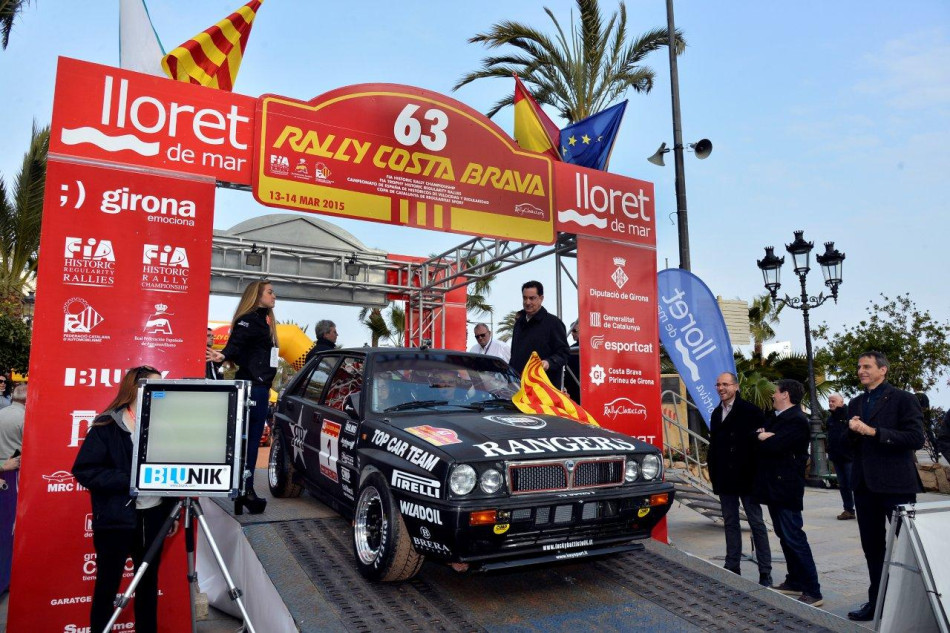Historic rallies: victorious entry of the “J2” cars

The first of the fifteen rounds of the 2015 FIA European Historic Sporting Rally Championship was held in the Girona region, in Spain. The event generated particular interest, due to two new major developments: firstly, the implementation of a limit on the number of tyres (a maximum of 14 tyres per car for the entire rally) and secondly, the opening of the Championship to cars of Period J2, namely those homologated between 1 January 1986 and 31 December 1990. The Period corresponds to the post-Group B. At the time, Lancia had had a four-wheel-drive version of its Lancia Delta homologated in Gr. N and Gr. A and had it developed in various versions, starting with the Delta HF 4WD in 1987, and then introducing the HF Integrale in 1988 and the HF Integrale 16v in 1989. Mazda (with the 323), Toyota (with the Celica), Mitsubishi (with the Galant), Subaru (with the Legacy) and Ford (with the Sierra 4X4) joined, over the course of the seasons, the contingent of the Group A four-wheel drives (in order to be homologated in this group, the model had to be produced in 5,000 examples), completing the offer of the two-wheel drive cars, such as the BMW M3 or the Ford Sierra RS Cosworth. Some of these cars – five Deltas, a BMW M3, a Sierra 4X4 and a Sierra Cosworth − already featured among the starters in the Rally Costa Brava and other models are expected as the season progresses. The expansion of the field to these “J2” is thus bearing fruit. And the double win obtained by the Italian crews “Lucky”-Pons and “Pedro”-Baldaccini, both with Delta HF Integrale 16v, should encourage the restoration of several other Gr. As which might be out there waiting for a new lease of life.
In the capable hands of the Frenchman, Christophe Vaison, the Lancia Rally 037 Gr. B, winner of the FIA Championship over the past years, did, nevertheless, leave its mark on the first kilometres of the Rally Costa Brava, by winning the first two special stages, before having to retire, let down by its bevel gear. The Deltas of “Lucky” and “Pedro” then won all of the 10 remaining special stages bar one, which went to the Porsche Carrera RS of the Swede, Mats Myrsell. With 5 scratches over 4 on compatriot “Pedro”, the Italian “Lucky” and fellow crew member Fabrizia Pons secured first place in the final classification of the Category 4, with a lead of a little over 30 seconds. The third and fourth places in category 4 were filled by other Lancia Deltas, the one driven by Carlo Falcone finishing ahead of Patrick Canavese’s. First among the two-wheel drives, the Sierra RS Cosworth of the Czechs Navratil-Kral finished fifth in Category 4.
The Porsche 911s achieved a formation finish securing the third to sixth places in the final classification, which takes into account all categories – Myrsell-Juntilla edged out Johnsen-Johnsen and Jensen-Pedersen in Category 2 (cars from 1970 to 1975),while Marenzana-Beltrame took the top spot Category 3 (cars from 1976 to 1981). Only two cars were entered in Category 1 (cars from before 1970). Loyal to the Championship for a good number of years, the Italians Parisi-d’Angelo drove their Porsche 911S to victory ahead of the BMW 2002 Ti of the Finns, Norrgard-Hamalainen.
The event was also host to the first competition of the FIA Trophy for Historic Regularity Rallies, where the finno-monégasque duo Hintikka-Calegari (Porsche 911) beat the Spaniards Garcia-Gijon (Porsche 911) and Faixedas-Jordan (Fiat 124) and the Luxembourgers Crucifix-Lambert (Ford Cortina Lotus).
The next event in the Championship, also linked with the Regularity Trophy, will take place in Italy, coinciding with the Sanremo Rally, this coming 10 and 11 April.

 Facebook
Facebook Twitter
Twitter